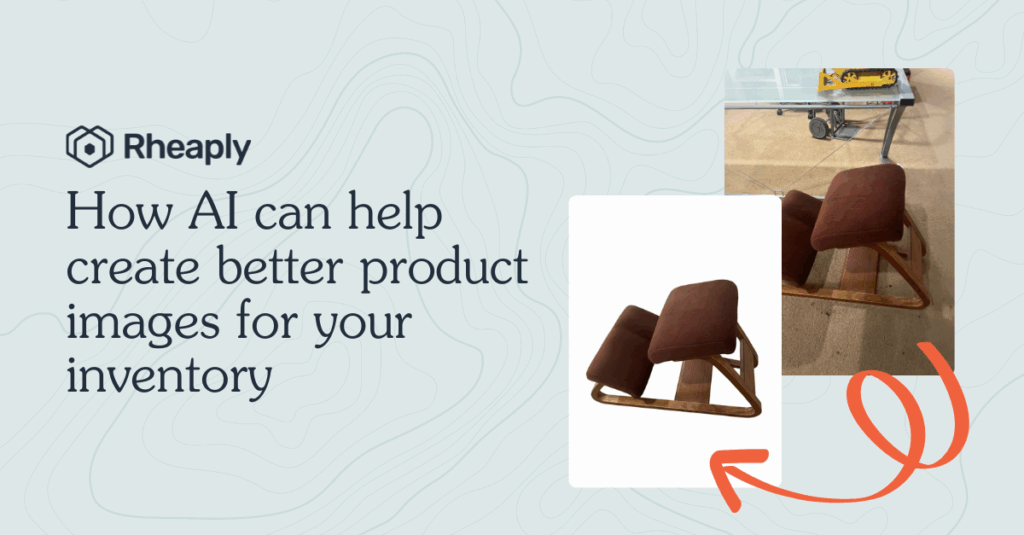At Rheaply, we’re all-in on the circular economy. Not only do we talk about it, but we design technology and deliver services that support the shift from a linear economy to a circular economy. During the first week of June 2023, our team had the pleasure of being surrounded by 1,380 other participants who are also working to advance the circular economy at Circularity 23 in Seattle, Washington.
As a refresher, the circular economy is a holistic solution that recaptures waste to create new resources and products, keeping goods, materials, and services in use for a regenerative future. Ultimately, it’s a transformation of our global systems based on three main principles:
- Design out waste and pollution
- Keep products and materials in use
- Regenerate natural systems
The transition to a circular economy is crucial for reducing the rate of global warming and the resulting climate crisis. Every year, dating back to before 1970, society has out-spent Earth’s resources. This means that we take more resources from the earth than it can produce in a given year. In 2022, we used 1.75 earths to support our annual resource consumption. We know this is not sustainable but what are people doing to remedy this?
Insert Greenbiz and Circularity 23. Greenbiz is a media and events company focused on the green economy. Greenbiz organizes a variety of events to engage thought leaders across sustainability, technology, and business from across the world. The Greenbiz Circularity conference began in 2019 to address systemic shifts to a circular economy. Over the past four years, the event has significantly grown as the topic of the circular economy becomes more widely accepted across governments, NGOs, and corporations.
Circularity 23 overview
Circularity 23 is a sustainability conference designed for diverse stakeholders from corporations, startups, NGOs, and government agencies to come together and advance circular economy practices. This year’s event encompassed six tracks:
- Business and innovation strategy
- Circular supply chains
- Enabling policies
- Stakeholder and social impact
- Materials revolution
- Next-gen products and packaging
Each year the event highlights one topic within the circular economy field, with reuse as the topic of 2023. With Seattle as the host city for Circularity 2023, there was much to share about ground breaking initiatives and policies across the region. Leading up to the event, Greenbiz published a piece highlighting how Seattle is at the forefront of reuse. With its Sustainable Purchasing Strategy, bans against landfilling recyclable materials, and its circular economy grant program, NextCycle Washington, Seattle is making some waves.
Seattle Circular Marketplace
The three-day event was sandwiched between Washington Governor Jay Inslee’s keynote and Seattle Mayor Bruce Harell’s closing remarks. It was inspiring to see such enthusiasm and support from both city and state government. Governor Inslee stressed the importance of taking a holistic approach to the circular economy by including energy systems in the conversation. Whereas, Mayor Harell highlighted the role of the circular economy in unifying the United States. He repeated the line “my parents were always tight with the money” emphasizing how circular economy practices are solutions for achieving more with less. Rheaply was thrilled to add one more reuse effort to the city, the Seattle Circular Marketplace.
We launched our newest circular marketplace the week of Circularity 23. The Seattle Circular Marketplace builds off of the amazing work that Washington Materials Marketplace achieved over the past two years. The marketplace will continue promoting reuse of products and materials in the region, but with a technology facelift. As of today, there are over 550 tons of building materials available for reuse on the Bay Area Circular Marketplace (BACM) in California. Many of the items on the BACM are sourced from project surplus, attic stock, and deconstruction projects. Rheaply expects the Seattle Circular Marketplace to be just as successful, if not more.
Deconstruction and the built environment at Circularity 23
The event consisted of a variety of reuse-focused panels, ranging from reusable packing and food service ware to the resale explosion in the retail sector and reuse in the built environment. Many sessions addressed the need for shifting from disposable, non recyclable packaging to reusable options. Packaging is a topic that has been center stage in circular economy conversations for many years. It became clear that event attendees are hungry for more sessions on reuse of durable goods, like furniture, fixtures, and building materials. Hungry enough that audience members were asking presenters “why is there so little talk about reuse in the built environment?”
Although this reuse conversation was lacking from the main stage, there were three notable sessions that focused on this topic.
The first of which, spotlighted innovators from building design and materials manufacturing industries. These innovators are experimenting with new circular models to reduce waste and avoid the release of additional carbon emissions from new products. We heard real stories about real challenges these groups are facing when implementing circular practices on the ground. Rachel Palopoli, Circular Economy Director at Tarkett, shared Tarkett’s challenges with collecting their used carpet tiles during deconstruction.
When you deconstruct a building you take the walls down first, resulting in carpet tiles littered with drywall pieces. Tarkett is unable to take back and recycle or reuse the contaminated carpet tile. On the other hand, if you remove the carpet tiles first then the flooring adhesive is exposed and the drywall sticks to the floor when you remove the walls. Rachel’s team has been collaborating with contractors to increase Tarkett’s product recovery during deconstruction. These are the kinds of challenges that we can’t overlook.
We started the final day of Circularity 23 bright and early with two back-to-back sessions on circular deconstruction and circular lumber. The deconstruction panel included Rheaply’s very own CEO, Dr. Garry Cooper, alongside other leaders in the built environment space. The session opened with the history of deconstruction ordinances in the United States. Dave Bennink, Founder of the Reuse Innovation Center, shared his experience supporting the City of Portland, Oregon with launching the United State’s first-ever deconstruction ordinance. The ordinance requires the deconstruction of buildings built in 1940 or earlier. As a deconstruction expert, Dave is working to upskill contractors to support the upcoming deconstruction boom. Currently, the workforce is lagging behind the supply of deconstruction projects due to these ordinances. Similar ordinances have been passed in New York City, New York (Local Law 97) and San Antonio, Texas.
Whereas Stephanie Phillips, Deconstruction and Circular Economy Program Manager for the City of San Antonio, highlighted the city’s work to holistically manage San Antonio’s deconstruction ordinance. Stephanie works hand-in-hand with historic preservation directors to protect structures located within historic districts or recognized as a local historic landmark. Stephanie shared her experience managing the people side of deconstruction – engaging with local organizations that are interested in reusing the material supply that comes out of the deconstruction project.
Deconstruction ordinances are critical for addressing embodied carbon in buildings but what do you do with all that used building materials? This is where Dr. Garry Cooper came into the mix. In order to avoid the release of carbon emissions from the manufacturing of building materials we need to stop buying new materials and start sourcing used materials from deconstructed buildings. Rheaply’s Bay Area and Seattle Circular Marketplaces are leading the charge. We plan to expand to 10 U.S. cities by the end of 2023.
Collaboration is key for reuse to be successful in the built environment. Introducing deconstruction ordinances will not solve the problem if you don’t have the workforce to support deconstruction projects and the technology to share used materials.
Insights and takeaways
Takeaway 1: Reuse was the star of Circularity 23 but reuse can vary greatly based on its application.
The spotlight is still shining on reuse for packaging, food service ware, and textiles. These applications are critical for the global transition from a linear economy to a circular economy, but so is reuse in the built environment. We’re still finding that this topic is overlooked in broad sustainability events. This has to change if we want to tackle 35% of global waste sent to landfill.
Takeaway 2: The desire for action was palpable.
A lot of sessions at Circularity 23 focused on the metrics for tracking circular economy initiatives and how to define success. It became clear that the audience is interested in learning about innovative, repeatable, and scalable examples of circularity in action. We learned about the real challenges Tarkett is facing with collecting used carpet tiles during deconstruction. These stories are just as important! We need to embrace transparency in order to make real change. Sharing ‘the how’ of your successful circularity program is important but don’t leave out the challenges you faced along the way.
Takeaway 3: Action starts with collaboration
Although it’s not the first time we’ve heard this takeaway, it still holds true. The world will not achieve measurable impact if we do not collaborate across industry, government, and academia to accelerate the transition to a circular economy. We often see academia and industry spearheading groundbreaking research. Their findings are leveraged by the government to mandate sustainability practices. Once regulations are in place, industry provides infrastructure and products to meet these mandates. We need to look for opportunities to speed up this process. Rheaply is working to develop these partnerships with action in mind.
Final thoughts from Circularity 23
According to Circle Economy, the global economy is only 7.2% circular compared to 9.8% in 2018. Population growth and material consumption is growing faster than our global transition to a circular economy. Despite efforts across various sectors to design products and processes with circularity in mind, we aren’t making enough progress.
Events, like Circularity 23, can act as catalysts for knowledge sharing, collaboration, and driving innovation in circular practices. The relationships we develop during these events are the starting point for collaboration throughout the remainder of the year. If we want to see progress, then we need to act on the conversations and relationships we build at these events.
Rheaply’s call to action leaving Circularity 23 is to maintain the connections you made during the first week of June.
Grab a coffee with the person you sat next to during the opening remarks, either virtually or in person. Approach these conversations by sharing what you can give to the relationship and what you would like to take away. If you’re looking for groups to collaborate with on reuse projects or are interested in learning more about the circular economy, then please reach out to our team at Rheaply! We need collaboration to achieve measurable impact.
Looking forward, Rheaply is excited to see more sessions focused on reuse in the built environment at Circularity 24 in Rheaply’s hometown of Chicago, Illinois. We know the circular economy community is hungry for this topic and Rheaply is no exception.


